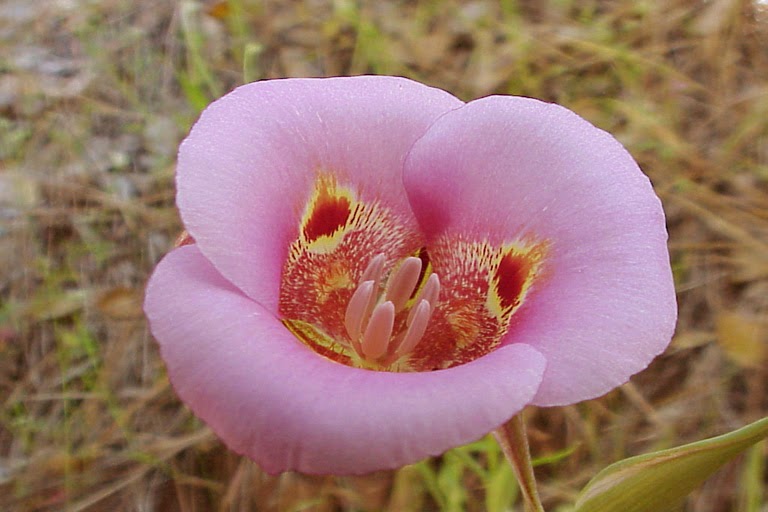Type of Flower
Calochortus:
Calochortus is a genus of plants that includes herbaceous, perennial and bulbous species. The genus includes approximately 70 species distributed in North America from south west British Columbia to northern Guatemala and east to Nebraska and the Dakotas.
Calochortus is the most widely dispersed genus of Liliaceae on the North American Pacific coast.Of these, 28 species are endemic to California.
The genus Calochortus includes Mariposas (or Mariposa lilies) with open wedge-shaped petals, Globe lilies and Fairy lanterns with globe-shaped flowers, and Cat's ears and Star tulips with erect pointed petals. The word Calochortus is derived from Greek and means "beautiful grass".
The diversity of Calochortus species is reflected in the wide range of English common names applied to the flowers. Unfortunately, the common names do not align cleanly with the scientific subsections above. But here is a quick guide:
- Mariposa Tulips are large, upright, bowl-shaped flowers, often with intricate color markings and sometimes hairs. Calochortus venustus is an example.
- Pussy Ears or Cat's Ears are small, upright flowers with very hairy tepals. Calochortus tolmiei is an example.
- Globe Tulips or Fairy Lanterns are nodding, roughly spherical flowers. Calochortus amabilis is an example.
- Star Tulips are small, upright flowers that resemble miniature Mariposas, although they usually have fewer markings. Calochortus uniflorus is an example.
Calochortus produce one or more flowers on a stem that arises from the bulb, generally in the spring or early summer. Unlike most other Liliaceae, Calochortus petals differ in size and color from their sepals.
Flowers can be white, yellow, pink, purple, bluish, or streaked. The insides of the petals are often very 'hairy'. These hairs, along with the nectaries, are often used in distinguishing species from each other.
Since most Calochortus species come from Mediterranean-type climate of the western USA, they grow during the cool, rainy winters, bloom mid to late spring, and are dormant in summer when they must be kept dry. The exceptions are the high altitude species (such as C. leichtlinii and C. gunnisonii) which are dormant in winter, emerging soon after the snows melt to bloom from mid to late summer. The alpine species generally need cold conditions in the winter and cool summers, but, since their growth cycle is in summer, they do need summer water. The Mexican species are also dormant in winter, when they should be kept on the dry side, and grow during the summer too, blooming in late summer or fall. They can tolerate a much warmer summer than the alpine species for most are from subtropical regions.
Bearing this in mind, therefore, it is absolutely essential to know what sort of region your Calochortus come from if you are going to be able to grow them successfully.
The majority of Calochortus species can take light frosts, even those from Southern California and the coastal regions. Those from the foothill regions of the major mountain ranges of the West can tolerate temperatures down to about 15 deg. F (10 deg. C), at least for short periods of time. ALL of the species I grow (including C. obispoensis and C. catalinae, both considered to be quite tender) have taken temperatures as low as this with only minor damage to the foliage, but the lowest temperatures they have endured were not sustained over several days. Once again, knowing the region your species come from will assist you in estimating their hardiness.
References:
http://en.wikipedia.org/wiki/Calochortus http://www.pacificbulbsociety.org/pbswiki/index.php/Calochortus http://thebulbmaven.typepad.com/the_bulb_maven/files/Calochortus.doc

























No comments:
Post a Comment